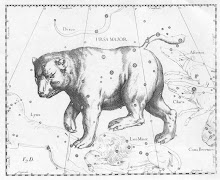This morning, I made some people happy. Because INSGC was one of the sponsors of the
Neil DeGrasse Tyson lecture on September 19 (see other stories, this issue), I
was (unexpectedly) provided with some additional tickets for the lecture. Two members of the staff in my IE department
had asked if I might be able to find them a seat, and I brought them the
tickets this morning. What pleased and
enthused me the most is the level of excitement and pleasure they demonstrated
when receiving the tickets.
This is a great example of the positive experience that we
at INSGC can bring to others when we support opportunities for STEM
engagement. As I have previously
mentioned in my Director’s Blog (http://insgc-bc.blogspot.com/2013/08/locally-grown.html),
the challenge may in fact be to identify what do our customers / prospective
partners / students want to learn, do, or share. Sometimes it is about going out to them;
other times, it’s bringing them in to help us understand what excites them. One INSGC-led project is attempting to take
this approach within the context of a “research experiences for teachers”
project. Research (to me) is a grand
exploration and scouting process. There
is a process of providing information about facts and formulae and functions,
but real research is not just about piling those facts up. It’s about having tools to go out and solve
problems, and make sense of a context that you didn’t previously understand…
perhaps a context no one has previously understood. The process of education is not a passive
one, as most inspired (and inspiring) teachers will tell you. In my research group’s blog (http://grouperlab.wordpress.com/2013/09/15/eaten-up-with-curiosity/)
, I recently wrote about being “eaten up with curiosity,” as Rudyard Kipling
described Rikki-Tikki the mongoose.
So, what does that sort of experience look like—the
well-informed, effectively-engaged, continuously curious citizen as
researcher? Well, we have a historical
grand exploration and scouting process, which set out from Indiana
(Clarksville) in October 1803: The Corps of Discovery, led by Lewis and
Clark. Now, you would never send out
people into the vast unexplored wilderness unprovisioned. For the Corps, it was medicine and gunpowder
and cartography equipment and notebooks: things to go exploring, and make notes,
and bring back descriptions of what you found.
For an informed, engaged person, the provisions of research are equally
important: analysis skills, mathematical techniques, understanding of physical
properties and laws. But no one would
confuse the provisions for the expedition.
They are simply tools to allow you to do a better job exploring. What’s out there? What do we want to know? How do we bring that experience back to
others? That’s a bit harder, especially
when the territory is vast and your experience is greatly limited. (There’s an ocean out there, or some magical
destination that may or may not really exist.
Even after the Corps returned, it was hard for most people to believe
things like the Badlands, or the Rockies, or the herds of bison, really existed—the
explorers had experienced things far outside of the previous experience of
those in the United States in 1806.) And
this is always a challenge of the researcher.
How do you share what you’ve seen and learned with others?
That is one way that I appreciate and enjoy Dr. Tyson: he
engages people to do the exploration that they can, and he provides them with
provisions to do more exploration if they choose. The stories are accessible, and interesting,
and entertainingly presented. And it
helps that stars are visible to lots of us, and we want to tell stories about
them. But Dr. Tyson doesn’t just
entertain. His informative examples are
also powerful tools and provisions, useful for a journey of discovery. I have come to see how vitally important it
is to find out which exploration journey a person wants to take, and provision
them for that journey, as well as other potential journeys and side trips not
yet envisioned. (One challenge that a high
school teacher has, that I don’t have in my university lectures, is that I can
make a better guess as to the range of journeys that an Industrial Engineering
undergrad will be ready to take after I have tried to provision them with
project design or statistics. It’s still
a pretty large range of journeys, so I better make sure my provisions will
last, and they don’t leak away or rot over the years to come.)
I love the process of exploration. Through my career I have noted that more
information, about more subjects, means more provisions that help me discover
and document and describe more about those territories I encounter along the
way. Sometimes the information is
challenging and new, but that’s okay.
Skis and snowshoes don’t seem to be that useful along the Ohio River in
September and October, but I can be glad to acquire them along the way to North
Dakota, or learn how to make them when I need them. If it is our job to teach the excitement of
exploration, and not just the excitement a specific person has for a specific subject, there is
an added responsibility to learn about a variety of journeys, and get people
ready and well-provisioned for those.
I’m pleased that INSGC is able to help with West Lafayette events this
fall that excite and engage both kids (Dr. Kaboom, Purdue Space Day) and adults
(Dr. Tyson and other general public visits by astronauts). A broad set of offerings provides our
audiences with a range of information and a span of topics that increase the
value for more people, regardless of their area of interest. In other words, a rich stock of provisions
for a explorers set off on a variety of journeys of discovery and
experience.





No comments:
Post a Comment